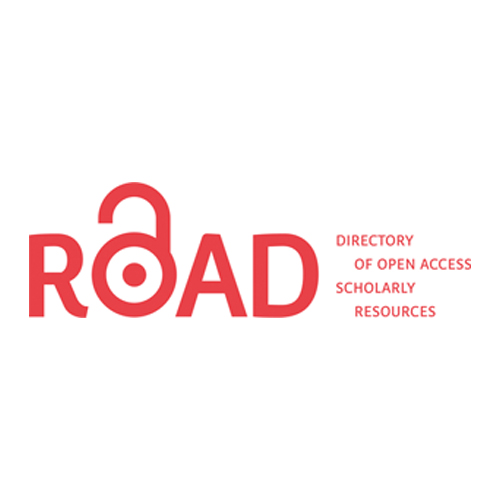The Role and Impact of Braille Libraries in Enhancing Literacy and Information Access for Visually Impaired Individuals
Keywords:
Braille libraries, literacy, information access, visual impairments, digital Braille, assistive technology, educational resources, accessibility tools, community programs, lifelong learning, inclusion, technological advancementsAbstract
This paper explores the role and impact of Braille libraries in enhancing literacy and information access for visually impaired individuals. Braille libraries have evolved significantly since their inception, providing essential resources such as Braille books, digital Braille materials, and various accessibility tools. These libraries not only support the educational and informational needs of their users but also foster a sense of community through literacy workshops and outreach programs. Technological advancements, including the integration of digital Braille and assistive technologies, have further enhanced the accessibility and user experience of Braille libraries. Through case studies of notable Braille libraries, this paper highlights their contributions to improving literacy rates and educational outcomes for visually impaired individuals. Despite facing challenges such as funding limitations and access barriers, Braille libraries continue to play a vital role in promoting lifelong learning and inclusion. The paper concludes with a discussion on future directions, emphasizing the need for expanded resources and increased public awareness to ensure the continued growth and impact of Braille libraries.
Downloads
References
Campsie, P. (2021). Charles Barbier: A hidden story. Disability Studies Quarterly, 41(2). https://doi.org/10.18061/dsq.v41i2.7499
Cornish, A. (Host). (2014). For the blind, connected devices create a novel way to read [Radio broadcast episode]. Retrieved June 27, 2022, from https://www.npr.org/2014/01/03/259414937/for-the-blindconnected-devices-create-a-novel-way-to-read
D’Andrea, F. M. (2009). A history of instructional methods in uncontracted and contracted braille. Journal of Visual Impairment & Blindness, 103(10), 585–594.
Daniels, P. T., & Bright, W. (Eds.). (1996). The world’s writing systems. New York, NY: Oxford University Press.
Eldridge, C. (1979). Braille literacy: The best route to equal education. Journal of Visual Impairment & Blindness, 73, 331–333.
Englebretson, R. (2009). An overview of IPA Braille: An updated tactile representation of the International Phonetic Alphabet. Journal of the International Phonetic Association, 39(1), 67–86.
Englebretson, R., Holbrook, M. C., Treiman, R., & Fischer-Baum, S. (Under Review). The primacy of morphology in English Braille spelling: An analysis of bridging contractions. Submitted to Morphology, {Special Issue: The Role of Morphology in Spelling Performance and Spelling Errors}.
Fischer-Baum, S., & Englebretson, R. (2016). Orthographic units in the absence of visual processing: Evidence from sublexical structure in braille. Cognition, 153, 161–174.
Heller, M. A., & Gentaz, E. (2014). Psychology of touch and blindness. New York, NY: Psychology Press.
Herzberg, T., & Rosenblum, L. P. (2019). What is braille and how do students read it? Paths to Literacy. Retrieved June 27, 2022 from http://www.pathstoliteracy.org/resources/what-braille-and-how-dostudents-read-it
Individuals with Disabilities Education Act. (2004). 20 U.S.C. §§1400 et. seq., 2004.
Lorimer, P. (2002). Reading by touch: Trials, battles, and discoveries. Baltimore, MD: National Federation of the Blind.
Lund, E. M., & Cmar, J. L. (2019). A systematic review of factors related to employment outcomes for adults with visual impairments. Journal of Visual Impairment and Blindness, 113(6), 493–517.
Mellor, C. M. (2006). Louis Braille: A touch of genius. Boston, MA: National Braille Press.
Millar, S. (1997). Reading by touch. New York, NY: Routledge.
Rex, E. J., Koenig, A. J., Wormsley, D. P., & Baker, R. L. (1994). Foundations of braille literacy. New York, NY: AFB Press.
Ryles, R. (1996). The impact of braille reading skills on employment, income, education, and reading habits. Journal of Visual Impairment & Blindness, 90, 219–226.
Ryles, R. (2000). Braille as a predictor of success. In Braille into the next millennium (pp. 462–491). Washington, DC: National Library Service for the Blind and Physically Handicapped, Library of Congress.
Schroeder, F. K. (1989). Literacy: The key to opportunity. Journal of Visual Impairment & Blindness, 83, 290–293.
Schroeder, F. K. (1996). Perceptions of braille usage by legally blind adults. Journal of Visual Impairment & Blindness, 90, 210–218.
Schroeder, F. K. (2000). Braille in the workplace. In Braille into the next millennium (pp. 296–313). Washington, DC: National Library Service for the Blind and Physically Handicapped, Library of Congress.
Seidenberg, M. (2017). Language at the speed of sight: How we read, why so many can’t, and what can be done about it. New York, NY: Basic Books.
Sheffield, R. M., D’Andrea, F. M., Morash, V., & Chatfield, S. (2022). How many braille readers?: Policy, politics, and perception. Journal of Visual Impairment & Blindness, 116(1), 14–25. https://doi.org/10.1177/0145482X211071125
Silverman, A. M., & Bell, E. C. (2018). The association between braille reading history and well-being for blind adults. Journal of Blindness Innovation and Research, 8(1). Retrieved November 10, 2022, from https://nfb.org/images/nfb/publications/jbir/jbir18/jbir080103.html. https://doi.org/10.5241/8-141H
Snowling, M. J., Hulme, C., & Nation, K. (Eds.). (2022). The science of reading: A handbook (2nd ed.). Maldon, MA: Wiley-Blackwell.






